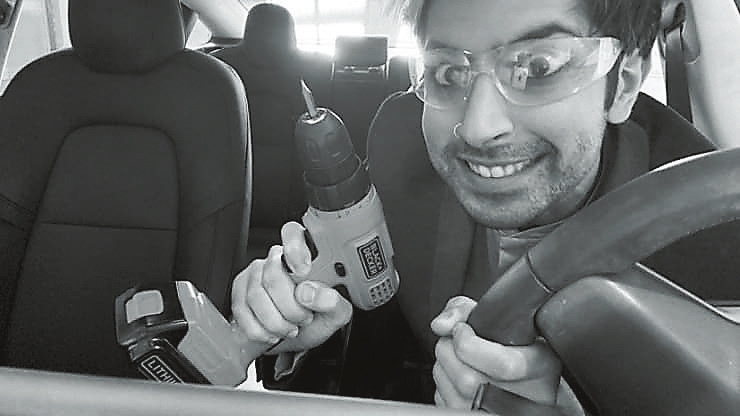
SIRAJ RAVAL has tried just about every way there is to mine for cryptocurrencies from his 2018 Tesla Model 3. He’s run free bitcoin mining software on his Apple Mac mini M1 and powered the computer by plugging an inverter into the 12-volt power socket located in the center console of his car. He’s also hooked up interconnected graphics processing units or GPUs to the “frunk” of his Tesla, running these machines off the car’s internal battery. Though it risks voiding his car warranty, Raval says it’s worth it. When the price of ether peaked in 2021, he claims he was netting as much as US$800 a month. Bitcoin miner Alejandro de la Torre said that ultimately, mining from a Tesla is just like connecting to any other power source. “The main component is the price of the electricity. If it’s cheaper doing it through an electric vehicle, then so be it,” said de la Torre. Back in 2018, Chris Allessi — who tells CNBC he was Wisconsin’s first-ever electric car dealer — decided to tinker with his Tesla. This is nothing new for Allessi, also known as K-Man on his YouTube channel, who builds custom electric cars in his free time and bills himself as a modern-day Doc Brown, the character from the film “Back to the Future” who retrofits a car into a time machine. “I like electricity. I like zapping stuff, building stuff. You give me an electric motor, I give you a finished product,” he said. Similar to Raval, Allessi has tried out a couple of different ways to transform his Tesla Model S into a crypto mining rig. In industry speak, crypto mining is the energy-intensive process in which machines around the world contribute their computing power to the overall network, in order to create new coins and validate transactions of existing tokens. They do that by running specialized software that crunches complicated math equations. To participate, essentially all you need is a computer and power. Allessi has tried mining for bitcoin by plugging a Bitmain Antminer S9 — a type of mining rig specifically used to mint the world’s most popular cryptocurrency — directly into his car battery, with the help of a power inverter. The inverter adjusts the voltage of Tesla’s electric battery to a level that’s compatible with his Antminer. Allessi has also successfully used the vehicle’s internal firmware to mine for altcoins. “It was no big deal,” he said of the process. He used the built-in computer and screen in the car to navigate to a web page that he had set up specifically to mine for the popular privacy token monero. “I could run the mining program within the browser,” Allessi explained. Of all the techniques that Raval has tried, he said the most profitable involves a mix of hacking into Tesla’s internal computer, plus plugging GPUs directly into the car’s electric motor. “It’s a computer with wheels ... It’s so simple to hack into this computer car,” Raval said, who describes the process as essentially hijacking the car’s internal firmware to allow for extra power usage. Tesla hacker and crypto miner Thomas Sohmers argued this step isn’t necessary. “The car is already built to deliver over 100 kilowatts, and anything connecting to the car is going to be a fraction of that. There’s no need to do what [Raval] says he’s doing. It doesn’t make technical sense,” said Sohmers. From there, Raval tethers five GPUs to his Tesla battery, and he runs a hashing algorithm to mine for ethereum. Professional-grade miners said that, in theory, the logistics check out. “The mechanisms are all there,” explained Whit Gibbs, CEO and founder of Compass, a bitcoin mining service provider. “You have a power source, you have space, you have the ability to add cooling. There’s certainly enough power provided by the battery to fire up an ASIC and run it,” continued Gibbs. (SD-Agencies) | 
